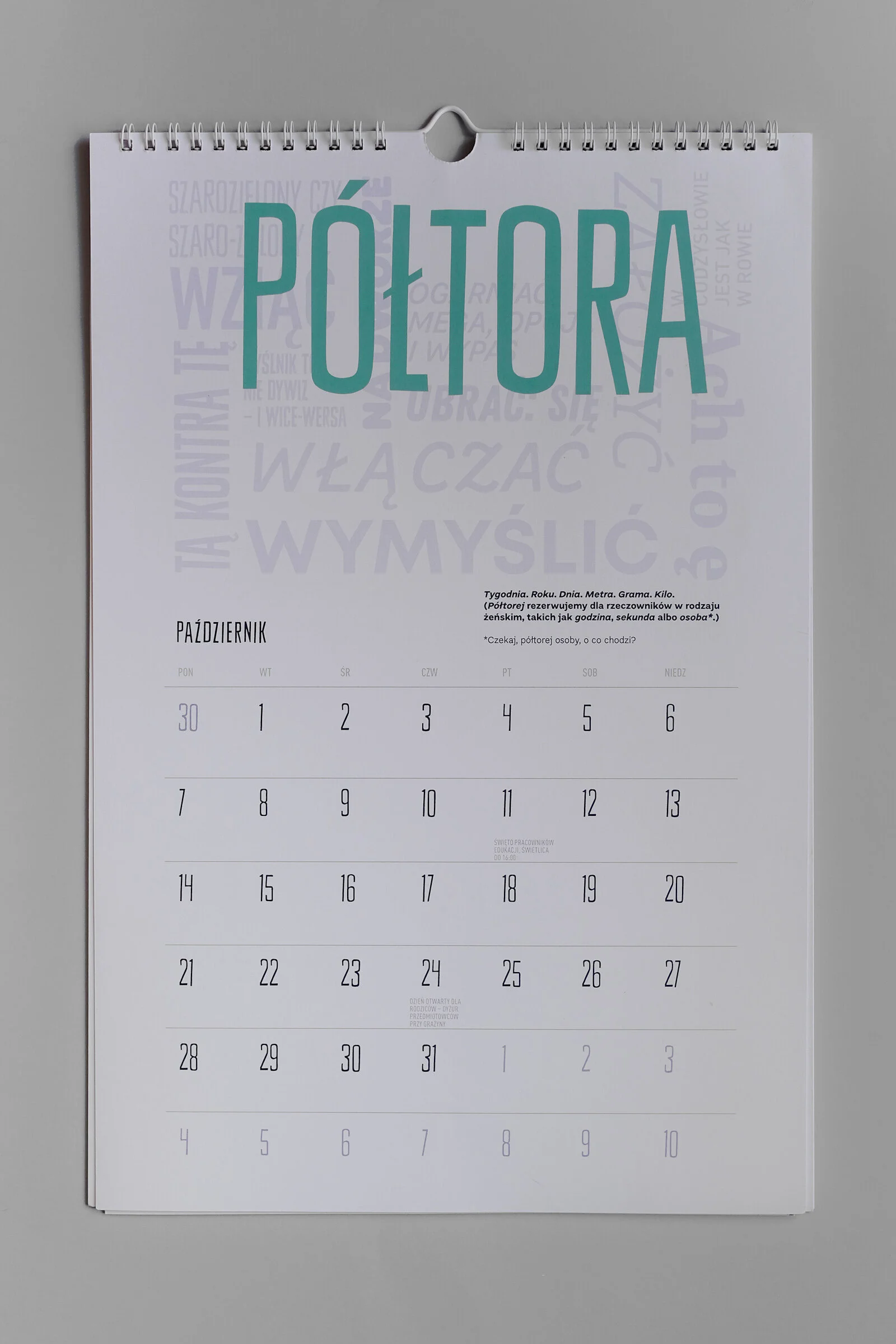In this post I’m back to that tricky niche that’s shaped like two Venn circles with a hair’s overlap: blogging in English about writing in Polish. But bear with me if you have it in you, because I promise to be concise, and also because I’m really proud of how this has turned out. (And I mean really proud: one of the post titles I considered was Opus Magnum.)
Volunteering at my son’s school counts among the more rewarding things I do. One reason is that I get to enjoy a behind-the-scenes glimpse at my child’s education. Another: the work I contribute tends to get accepted. So when last spring I pitched a grammar-driven idea for this year’s school-sponsored wall calendar, I was on the fast track to a first draft. My angle? Correcting common mistakes using “sticky” persuasion. My one rule? Never deploy the wrong form head-on. My other rule? Keep the geeky bits to a minimum. Next, copywriter Maciej Gosk and linguist Dana Mikulska—fellow language-adjacent parents with a hand to lend—chimed in to help me simplify things (seems that’s what my work usually needs). Finally, the speedy and talented Piotr Bujnowski at Relaks Studio (creator of the bold Chocimska brand identity) did his thing and turned plain text into a pleasing whole. The result? A yearful of tongue-in-cheek grammar lessons designed to neutralize some of the most prevalent language goofs in current-day Polish. They’re our equivalents of English blunders like (a) that impostor apostrophe in the possessive its, or (b) pronominal hypercorrections such as those starring he and I when what is called for instead is a healthy him and me, or (c) that infuriating literally that gets everyone’s goat.
Thus, in two hundred Warsaw homes and a handful of classrooms, the 2019–2020 academic year is represented as a sequence of learning opportunities and a defense of deliberate language. Because I am a grammar nut (the kind David Foster Wallace called a SNOOT in his first-rate review-cum-manifesto eighteen years ago), my obvious hope is that some of the lessons will stick—particularly among the grown-ups I was stealthily targeting, since it’s no faux pas to go around correcting the grammar of kids. My other hope? That a few young minds will discover they’re dazzled by this freewheeling intro to linguistics. I think I would have been, had such a calendar existed in my ancient past.
I’ll sign off with two somewhat random points, because both warrant noting, but neither needs to spawn a whole extra paragraph of leading text. One—double-sided printing really isn’t for wall calendars, which ought to be designed for handy page-flipping, so that it’s easy to glance at the next month and scribble in an appointment. Two—right next to the toilet is a terrific place for a family calendar, because, well, you do the math. Speaking of math, maybe there’s an idea there for next year.











